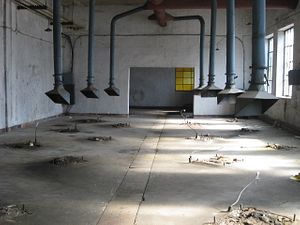North Korea’s 5 megawatt (MW) reactor at the Yongbyon Nuclear Scientific Research Center may be back up and operational according to a new expert assessment.
David Albright and Serena Kelleher-Vergantini of the Institute for Science and International Security (ISIS) note that satellite imagery suggests that the reactor “may be operating at low power or intermittently.”
Albright and Kelleher-Vergantini present their findings in a new report titled “Yongbyon: A Better Insight into the Status of the 5MWe Reactor.” The report, along with the satellite images used to support the analysis, is available here.
The Yongbyon facility has been operated and shutdown intermittently over the years. Construction on the facility began in the 1980s, and the reactor went critical in 1986.
The authors note that assessments in fall 2014 showed that activity around the Yongbyon facility had fully or partially ceased. As of this spring, that is no longer true.
Evidence supporting renewed activity is primarily circumstantial and based off what can be gleaned from satellite imagery. The authors note that their assessment derives from the “analysis of melting snow patterns on the reactor and turbine buildings.”
According to their assessment, the snow patterns on the roof exhibit an irregular melting pattern during the seasonal transition from the winter months to the spring, suggesting activity inside the building. Notably, “little snow is present on the roof of the reactor’s turbine building.”
The satellite imagery also shows evidence that the reactor’s secondary cooling system may be active. This is based on a visible stream of warm water “being discharged from the 5MWe reactor’s discharge pipeline, which was identified when the reactor was operating prior to September 2014.”
Albright is also the author of a recent assessment of North Korea’s nuclear program that suggested, in a worst case scenario, North Korea could acquire as many as 100 nuclear weapons by 2020.
Recently, reports have emerged that Chinese nuclear experts believe that North Korea’s progress toward uranium-based nuclear devices is further along than previously thought.
The Yongbyon reactor, if running at full capacity for a year, can yield enough plutonium for a single nuclear bomb.
All of North Korea’s known nuclear tests (2006, 2009, and 2013) to date have involved plutonium-based devices.

































